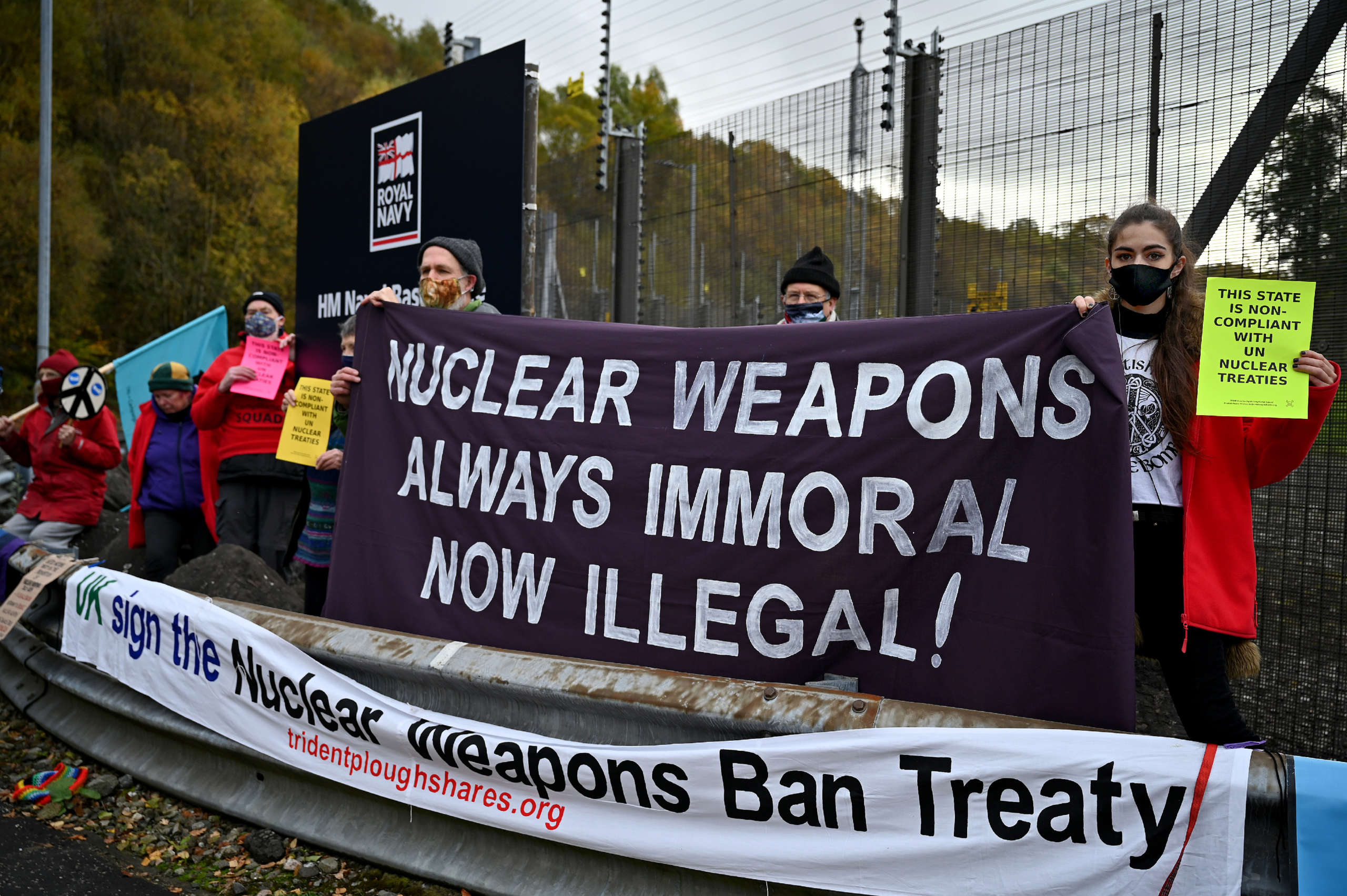“Remember that when your congressional members pitch expanding nuclear weapons production as jobs programs; you can respond that they are illegal. Tell them they should show visionary leadership and moral courage by helping to create cleanup and green energy jobs instead.”
By: / Santa Fe New Mexican

Jan. 22 will go down in history as the day when the tide turned against nuclear weapons. That was the day when the Treaty on the Prohibition of Nuclear Weapons went into effect, signed by 122 countries.
It specifically prohibits nations from developing, testing, using or threatening to use nuclear weapons and assisting others in doing so. It reinforces existing international law obligating all states not to test, use or threaten to use nuclear weapons.
What immediate impact will it have here, given that the Los Alamos National Laboratory is the birthplace of nuclear weapons and now sole producer of plutonium pit triggers for the expanding U.S. stockpile? The brutally honest answer is no impact, not immediately.
But think about it. Nuclear weapons are now internationally illegal, just as horrendous chemical and biological weapons of mass destruction have long been. But nuclear weapons are the worst WMDs, potentially killing millions more while causing radioactive fallout and famine-inducing nuclear winter. Ask your New Mexican congressional members to explain why nuclear weapons shouldn’t be internationally banned just like chemical and biological WMDs, all of which cause agonizing, indiscriminate suffering and death.
Predictably, our politicians and self-interested nuclear weapons labs will point to the sacred cow of “deterrence.” But we need to honestly examine exactly who needs to be deterred when the U.S. is the only country to have used nuclear weapons and our presidents have repeatedly threatened to use them again (for example, Nixon in Vietnam). Furthermore, we just had an arguably deranged president with the sole authority to start nuclear war.
The fact is that the U.S. and the Soviet Union/Russia have always had a hybrid of deterrence and nuclear war fighting capability that could overkill the planet many times over. That is why both sides have thousands of nuclear weapons, many on hair trigger alert, instead of the few hundred needed for just deterrence. That is why the U.S. has a $1.5 trillion, so-called “modernization” program to completely rebuild all nuclear warheads and acquire new missiles, submarines and bombers to deliver them.
You may be skeptical of a ban treaty, but ask yourself: What have nukes done to protect you from global pandemics and climate change? What are the odds of nuclear war caused by false warnings (as has happened many times) or cyber hacking? How reliable will exorbitantly expensive new nuclear weapons be when they can’t be tested because of the global testing moratorium? Or worse yet may prompt the U.S. back into testing, thereby accelerating the new arms race?
It may seem like an impossible dream to abolish nuclear weapons. But that’s what was once said about the abolishment of slavery. We can learn from the Martin Luther Kings, the Harriet Tubmans, the John Lewises that it can be done. Whereas the nuclear weapons ban treaty will have little if any immediate effect on New Mexico’s two nuclear weapons labs, it will be a game changer.
Remember that when your congressional members pitch expanding nuclear weapons production as jobs programs; you can respond that they are illegal. Tell them they should show visionary leadership and moral courage by helping to create cleanup and green energy jobs instead.
Nuclear weapons are now internationally illegal. The U.S. was among the last major countries to abolish slavery but did so in the end. To modify MLK’s famous quote: “The arc of the moral universe is long, but it bends towards [the] justice” of abolishing nuclear weapons. This ban treaty is the beginning of that end and should be celebrated as such.
Jay Coghlan with Nuclear Watch New Mexico has been working on nuclear weapons issues for more than 30 years. For more see nukewatch.org.
